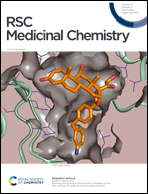The medicinal chemistry evolution of antibody–drug conjugates
Abstract
Antibody–drug conjugates (ADCs) comprise 3 components of wildly differing sizes: antibody (150 000 Da), linker (typically <500 Da) and payload (typically <500 Da). While the drug-linker makes up only a small percent of the ADC it has a disproportionately massive impact on all aspects of the ADC. Replacing maleimide with bromoacetamide (BrAc) affords stable attachment of the linker to the antibody cysteine, supports total flexibility for linker design and affords a more homogenous ADC. Optimisation of the protease cleavable dipeptide reduces aggregation, facilitates moderation of the physicochemical properties of the ADC and enables long-term stability to facilitate subcutaneous self-administration. Payloads are designed specifically to afford the optimal ADC. Structural information and SAR guide design to improve both potency and selectivity to the small molecule target improving the therapeutic index of resulting ADCs. Minimising the solvent exposed hydrophobic surface area improves the drug-like properties of the ADC, the realisation that the attachment heteroatom can be more than just the site for linker attachment as it can also drive potency and selectivity of the payload and the adoption of a prodrug strategy at project initiation are key areas that medicinal chemistry drives. For an optimal ADC the symbiotic relationship of the three structurally disparate components requires they all function in unison and medicinal chemistry has a huge role to ensure this happens.

- This article is part of the themed collections: Highlights from Industry and Editor’s Choice Collection


 Please wait while we load your content...
Please wait while we load your content...